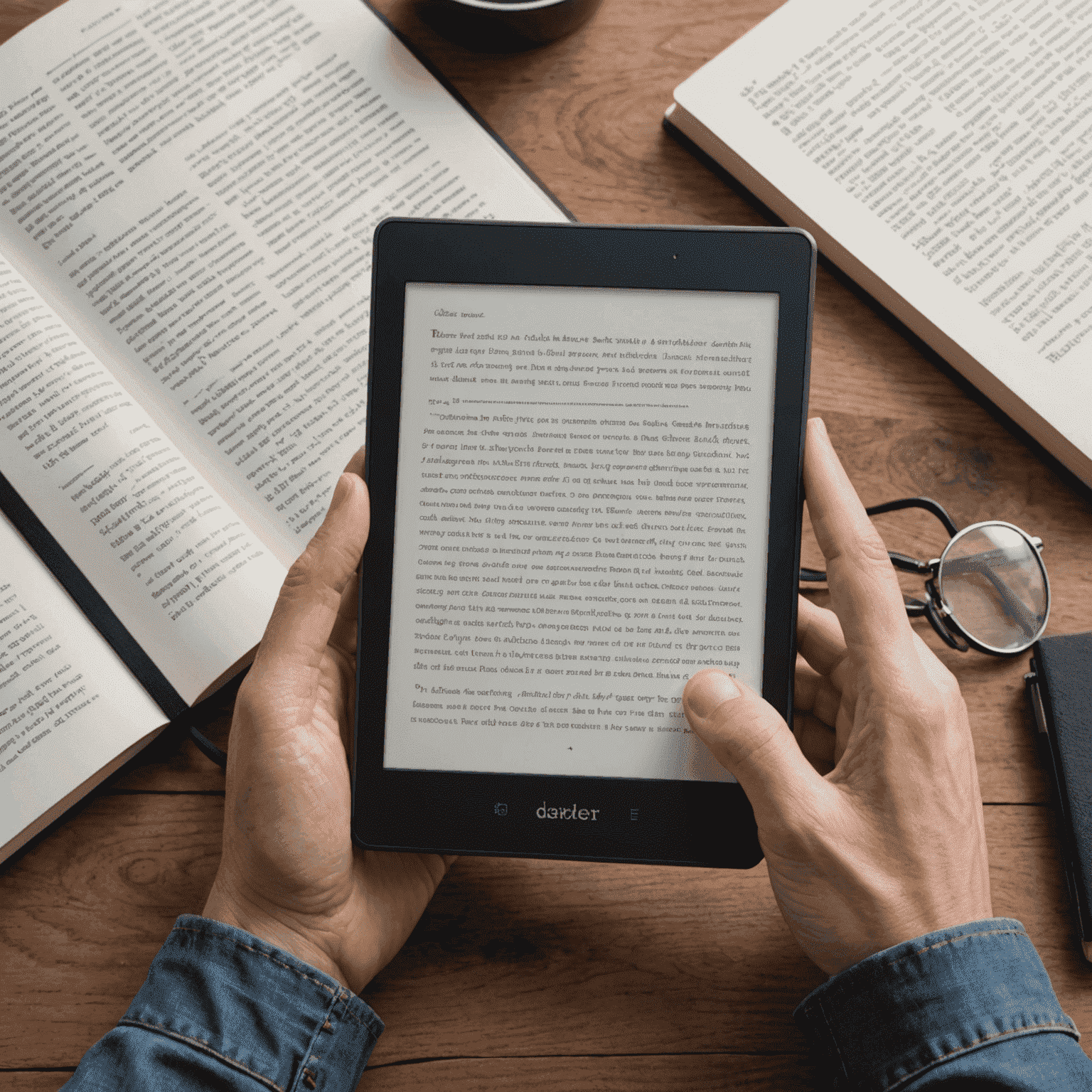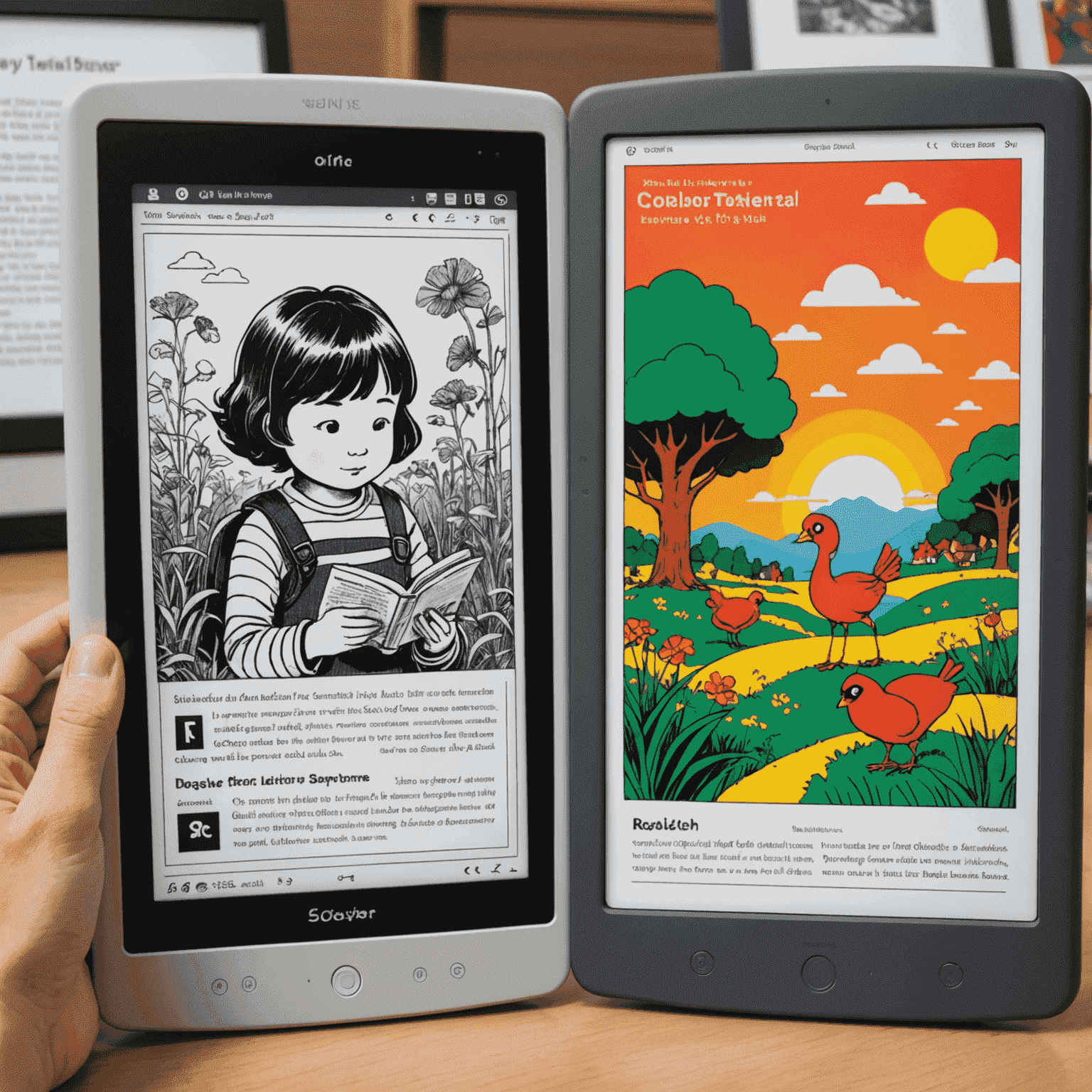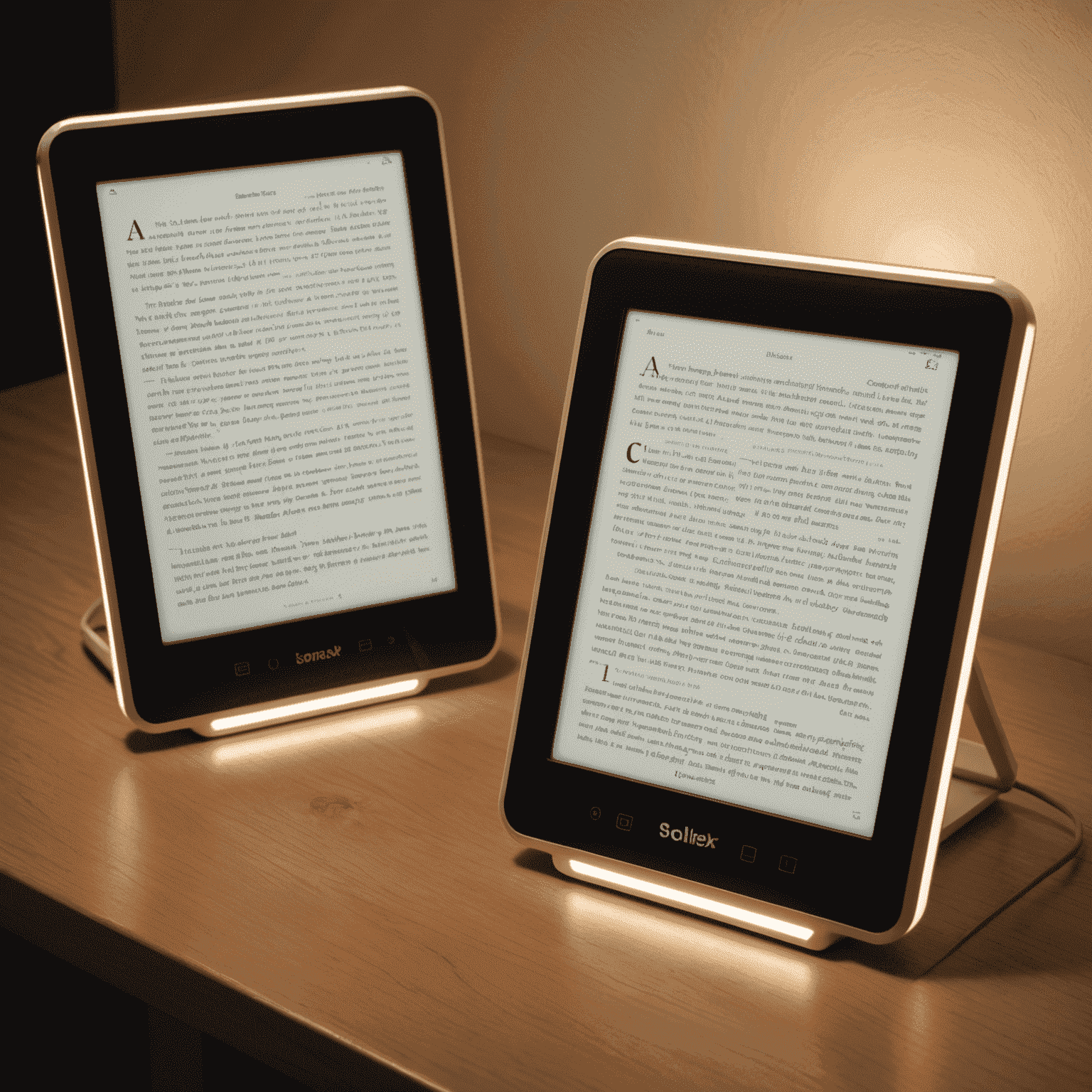E-Reader Technology Advancements

The world of digital reading is evolving rapidly, with new innovations enhancing the e-reader experience like never before. Let's explore the cutting-edge advancements that are revolutionizing how we consume digital content.
High-Resolution E-Ink Displays
The latest e-readers boast incredibly sharp e-ink displays, rivaling the clarity of printed text. With resolutions exceeding 300 PPI (pixels per inch), these screens offer a reading experience that's indistinguishable from paper, reducing eye strain and improving readability in various lighting conditions.
Color E-Ink Technology
Gone are the days of monochrome e-readers. New color e-ink technology brings vibrant hues to digital pages, perfect for illustrated books, magazines, and educational materials. This advancement opens up new possibilities for content creators and enhances the overall reading experience.

Improved Battery Life
Modern e-readers are pushing the boundaries of battery efficiency. With optimized power management and low-energy displays, some devices can now last weeks or even months on a single charge, making them ideal companions for avid readers and travelers alike.
Enhanced Connectivity
The latest e-readers come equipped with improved Wi-Fi and cellular capabilities, allowing readers to access vast libraries of content on the go. Some models even feature Bluetooth connectivity for audiobook playback through wireless headphones, bridging the gap between written and spoken word.
Adaptive Lighting
Advanced front-light technology in modern e-readers automatically adjusts brightness and color temperature based on ambient conditions and time of day. This feature reduces blue light exposure during evening reading sessions, promoting better sleep patterns for night owls.

Ergonomic Design Improvements
Manufacturers are focusing on ergonomics, creating devices that are more comfortable to hold for extended periods. Lighter materials, textured backs for better grip, and strategically placed page-turn buttons contribute to a more natural and enjoyable reading experience.
AI-Powered Reading Recommendations
Artificial intelligence is making its way into e-reader application, offering personalized book recommendations based on reading habits, preferences, and even emotional responses to content. This technology helps readers discover new titles and authors they might love.
Conclusion
As e-reader technology continues to advance, the digital reading experience is becoming more immersive, comfortable, and tailored to individual preferences. These innovations are not only enhancing the joy of reading but also making literature more accessible to a wider audience. The future of e-readers looks bright, promising even more exciting developments on the horizon for book lovers everywhere.